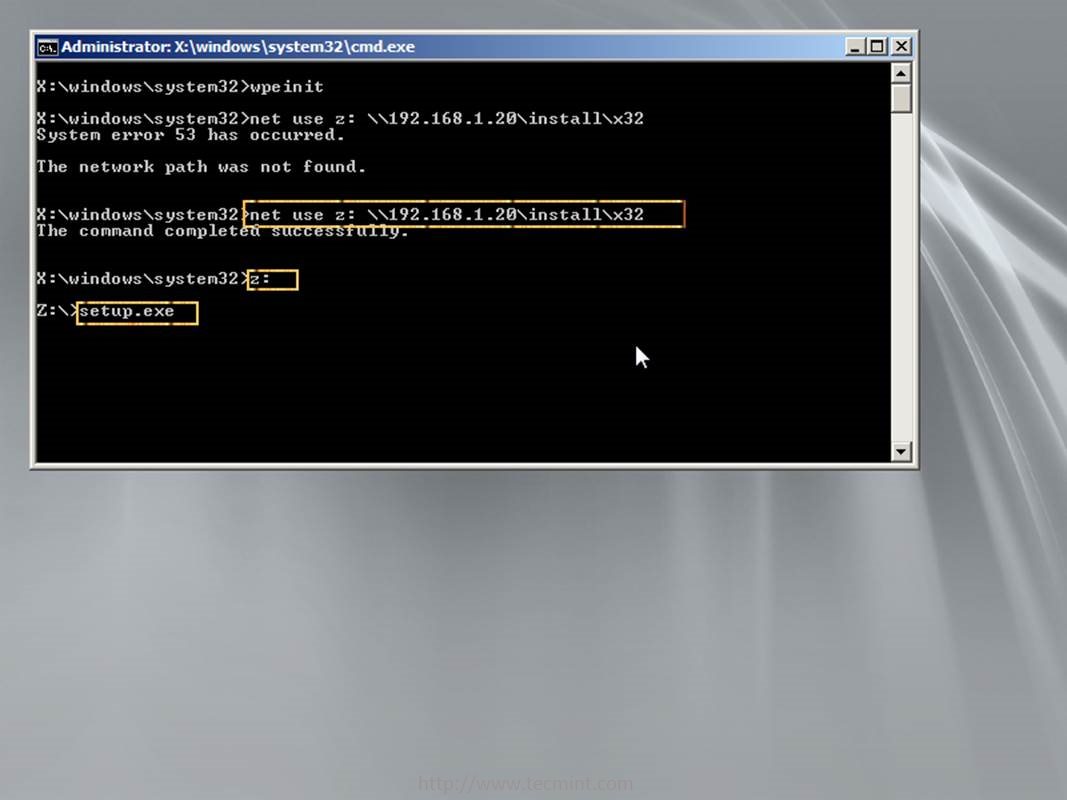Boot Windows Xp Iso Pxe
The XPE team outlined key scenarios that it wanted Windows XP Embedded to support. When Windows XP Service Pack 1 shipped, one of these scenarios was referred to as Remote Boot. Using a PXE bootstrap similar to RIS, Windows XP Embedded Remote Boot allowed an embedded device to boot over the network, using a RAMDisk as its boot drive. Let's take a closer look at this so you can see how it relates to Windows PE: • The PXE client boots and a PXE boot is requested. (Depending on how your PC is configured, this may involve a BIOS boot selection at boot time or possibly pressing F12 once or twice.) • The PXE client sends out a special UDP broadcast message—a modified Dynamic Host Configuration Protocol (DHCP) discover request. • The DHCP server (which may or may not be the actual PXE server) sends back an offer, which includes valid network information and the address of the PXE server.
• The PXE client responds with a request for a Network Boot Program (NBP). This is a small executable image that can perform a defined task. • The PXE server responds with an acknowledge response that includes the Trivial File Transfer Protocol (TFTP) download location of the NBP, which the client then begins to download. • The NBP is executed. In the case of Windows (RIS, ADS, or Remote Boot), execution involves running a small 16-bit app called startrom.com (or startrom.n12, which is a version that doesn't require the user to press the F12 key). [ Editor's Update -:In RIS, this file is called startnbs, not startrom.com] Startrom then goes back to the TFTP server and downloads the Windows NT Boot Loader (NTLDR) or a file named accordingly (setupldr.exe renamed as NTLDR in the case of Windows PE RAMDisk boot).

PXE Boot ANY ISO? Even XP works out. As for the sluggish performance. OP wants to PXE boot.iso files, such as a Windows install iso. PXE booting to BARTPE. From SME Server. PXE booting to ISO Goal. We want to boot ISO images via PXE. You can use a WINDOWS XP SP2 source.
• In the case of Remote Boot, the NTLDR pulls down a boot.ini file (winnt.sif in the case of Windows PE RAMDisk boot), which specifies where to find the RAMDisk file to load. • The NTLDR pulls this RAMDisk file down directly into RAM, and initializes just as it would if it were booting directly from a hard disk.
We did decide on one key change. The Windows XP Embedded implementation of Remote Boot worked by booting an SDI file.
Tragically Hip Fully Completely Deluxe Torrent on this page. SDI files are sector-based disk images, not unlike those used by many deployment technologies. Since Windows PE discards all registry writes while running—effectively working read-only so it can run from a CD—the ISO file format (a virtual CD, if you will) was a more natural choice. We incorporated this change and shipped this with Windows Server ® 2003 SP1.

Note that this functionality is only available for use with x86 and x64 architectures of Windows. It does not work with the Intel Itanium (IA64) architecture. Regardless of the method you use, RAMDisk booting uses up a significant (though not unreasonable) amount of RAM.
For a default Windows PE image you'll need at least 145MB of RAM for the RAMDisk and at least 96MB for the working set. To use one of these RAMDisk methods, you also must build your Windows PE image from Windows Server 2003 SP1 media—either Standard Edition or Enterprise Edition. A Windows PE image created from the original release of Windows Server 2003 or any release of Windows XP will not work. To create a RAMDisk boot image, you always begin by creating the actual ISO image that will be booted into RAM. This is the virtual CD that will be stored in RAM while Windows PE is running, regardless of what medium you boot it from. You should keep the ISO image's size to a minimum. This involves removing any unnecessary files (Windows PE documentation includes a list of removable files) and including only the files that are necessary for your image to work.
For example, you should include any network interface card (NIC) and mass-storage controller (MSC) drivers, and any binaries or dependencies necessary for your application. Remember that only the files included in the ISO will be available in the RAMDisk image. Circuit Maker 2000 Standard Serial Key. In most scenarios, you will have two drives available: the drive or device that you booted from (unless you use PXE, which won't map the drive) and the RAMDisk-booted CD image, which will always appear as your X: drive.
The X: drive will act as a CD-ROM drive, even if your system does not have a local CD or DVD drive. Here's a general overview of the steps needed to perform a PXE RAMDisk boot, though some of the steps may differ slightly depending on your particular PXE server (consult your documentation for details): • Insert your integrated Windows Server 2003 SP1 CD. (Alternatively, you can browse to a Universal Naming Convention, or UNC, share of Windows Server 2003 SP1.) • Copy ntdetect.com and setupldr.exe from the I386 directory (do not select setupldr.bin). • Paste these two files into the root of the PXE server. Rename the setupldr.exe file as ntldr (note that it has no file extension). • Copy the ISO image you created earlier to the root of your PXE server. • Create a new text file in the root of the PXE server and name it winnt.sif.